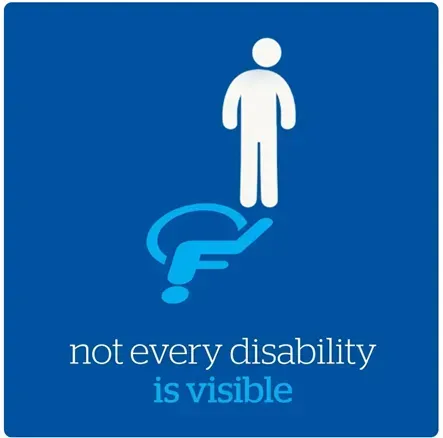





Andrew Saul, Commissioner of Social Security, today announced five new Compassionate Allowances conditions: Desmoplastic Small Round Cell Tumors, GM1 Gangliosidosis - Infantile and Juvenile Forms, Nicolaides-Baraister Syndrome, Rubinstein-Tybai Syndrome, and Secondary Adenocarcinoma of the Brain. Compassionate Allowances is a program to quickly identify severe medical conditions and diseases that meet Social Security’s standards for disability benefits.
“Social Security’s top priority is to serve the public, and we remain committed to improving the disability determination process for Americans,” said Commissioner Saul. “Our Compassionate Allowances program gets us one step closer to reaching our goals by helping us accelerate the disability process for people who are likely to get approved for benefits due to the severity of their condition.”
The Compassionate Allowances program quickly identifies claims where the applicant’s condition or disease clearly meets Social Security’s statutory standard for disability. Due to the severe nature of many of these conditions, these claims are often allowed based on medical confirmation of the diagnosis alone. To date, more than 600,000 people with severe disabilities have been approved through this accelerated, policy-compliant disability process. Over the last decade, the list has grown to a total of 242 conditions, including certain cancers, adult brain disorders, and a number of rare disorders that affect children.
The agency incorporates leading technology to identify potential Compassionate Allowances and make quick decisions. When a person applies for disability benefits, Social Security must obtain medical records in order to make an accurate determination. Social Security’s Health IT brings the speed and efficiency of electronic medical records to the disability determination process. With electronic records transmission, Social Security is able to quickly obtain a claimant’s medical information, review it, and make a determination faster than ever before.
For more information about the program, including a list of all Compassionate Allowances conditions, please visit www.socialsecurity.gov/compassionateallowances.
To learn more about Social Security’s Health IT program, please visit www.socialsecurity.gov/hit .
People may apply online for disability benefits by visiting www.socialsecurity.gov.
To create a my Social Security account, please visit www.socialsecurity.gov/myaccount .
# # #
To get more Social Security news, follow the Press Office on Twitter @SSAPress.
El Comisionado del Seguro Social, Andrew Saul, anunció hoy cinco padecimientos nuevos bajo las aprobaciones por compasión: tumores desmoplásicos de células pequeñas y redondas, gangliosidosis GM1 - Formas infantiles y juveniles, el síndrome de Nicolaides‑Baraister, el síndrome de Rubinstein-Tybai y el cáncer de cerebro secundario. Las aprobaciones por compasión es un programa para identificar rápidamente padecimientos médicos severos y enfermedades que cumplen con los estándares del Seguro Social para los beneficios por incapacidad.
El Comisionado Saúl dijo: «La prioridad mayor del Seguro Social es servir al público, y seguimos comprometidos en mejorar el proceso de determinación por incapacidad para las personas que viven en los EE. UU. Nuestro programa de aprobación por compasión nos acerca un paso más a alcanzar nuestras metas ayudándonos a acelerar el proceso del programa por incapacidad para las personas que tienen la probabilidad de obtener la aprobación de beneficios debido al estado severo de su padecimiento».
El programa de aprobación por compasión identifica rápidamente las solicitudes en las que el padecimiento o la enfermedad del solicitante cumple claramente con los estándares legales de incapacidad del Seguro Social. Debido a la naturaleza severa de muchos de estos padecimientos, estas reclamaciones a menudo se aprueban basadas únicamente en la confirmación médica del diagnóstico. Hasta la fecha, más de 600,000 personas con incapacidades severas han sido aprobadas a través de este proceso acelerado, que cumple con la política de aprobaciones por incapacidad. En la última década, la lista ha crecido hasta un total de 242 padecimientos, incluyendo ciertos cánceres, trastornos cerebrales en adultos y un número de trastornos inusuales que afectan a niños.
El Seguro Social incorpora la tecnología más avanzada para identificar los posibles casos para el programa de aprobación por compasión y toma rápidamente las decisiones. Cuando una persona solicita los beneficios por incapacidad, el Seguro Social debe obtener los registros médicos para poder hacer una determinación precisa. El sistema computarizado de salud del Seguro Social conocido como «Health IT» trae la rapidez y eficacia de los registros médicos electrónicos al proceso de la determinación de la incapacidad. Con la transmisión electrónica de los registros, el Seguro Social puede rápidamente obtener la información médica de un reclamante, revisarla y tomar una determinación más rápido que nunca antes.
Para más información sobre el programa, e incluso una lista de todos los padecimientos de la aprobación por compasión, por favor visite www.socialsecurity.gov/compassionateallowances (solo disponible en inglés).
Para informarse mejor sobre el sistema computarizado de salud del Seguro Social «Health IT», por favor visite www.socialsecurity.gov/hit (solo disponible en inglés).
Las personas pueden solicitar por internet los beneficios por incapacidad visitando www.segurosocial.gov.
Por favor visite www.socialsecurity.gov/myaccount (solo disponible en inglés) para crear una cuenta de my Social Security.
# # #
Para más noticias sobre el Seguro Social, siga a la Oficina de Prensa en Twitter @SSAPress (solo disponible en inglés).






Address :
688 E. Main St. Salisbury, MD 21804
E-mail: whitney@UNA1.org
Toll Free Phone : 1-800-776-5694
Local Phone: 410-543-0665
Fax:
410-543-0432
To discuss employment opportunities in Cecil, Talbot, Kent, Dorchester, Worcester, please call: Heather Snell. (EXT. #103)